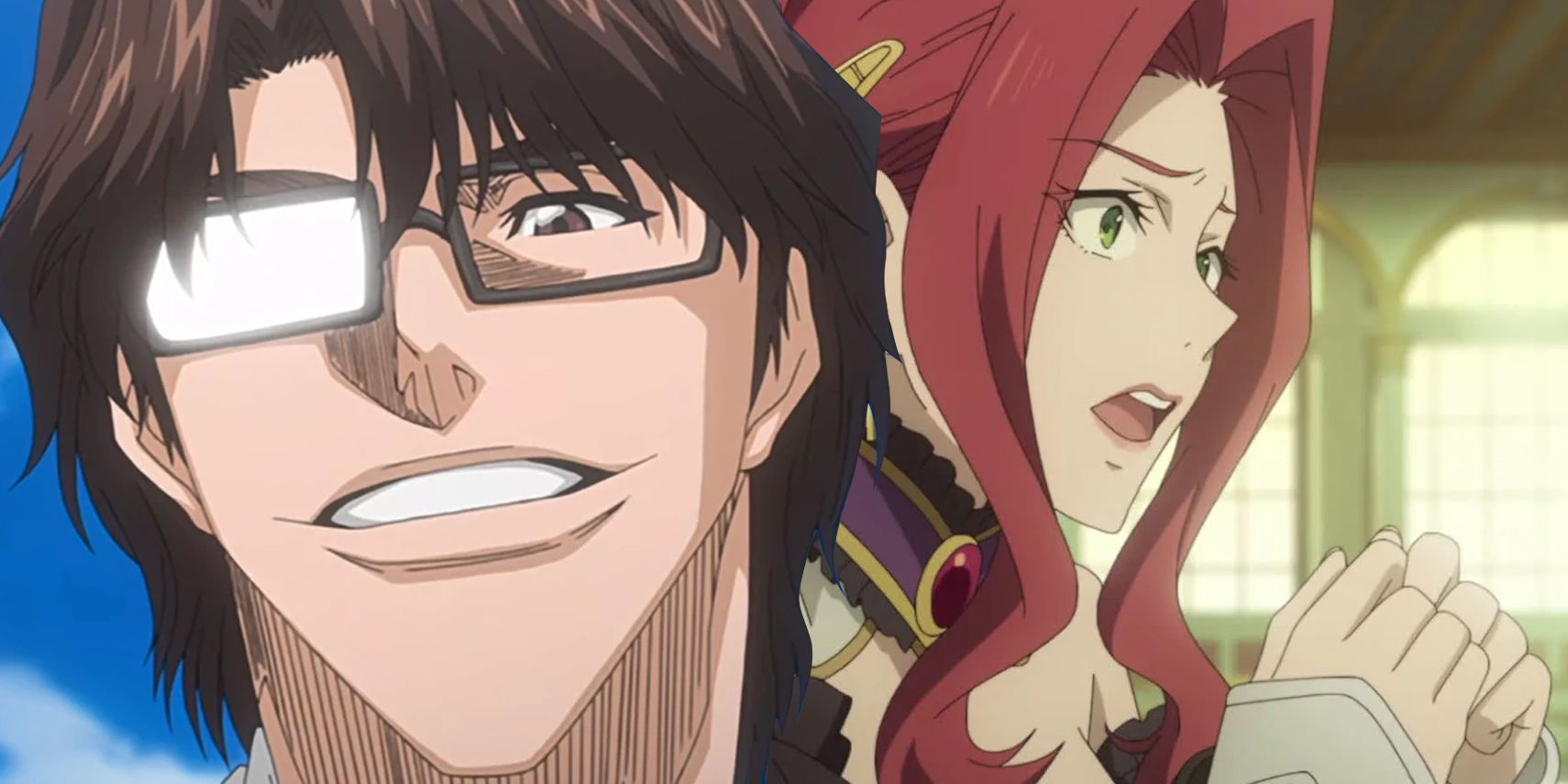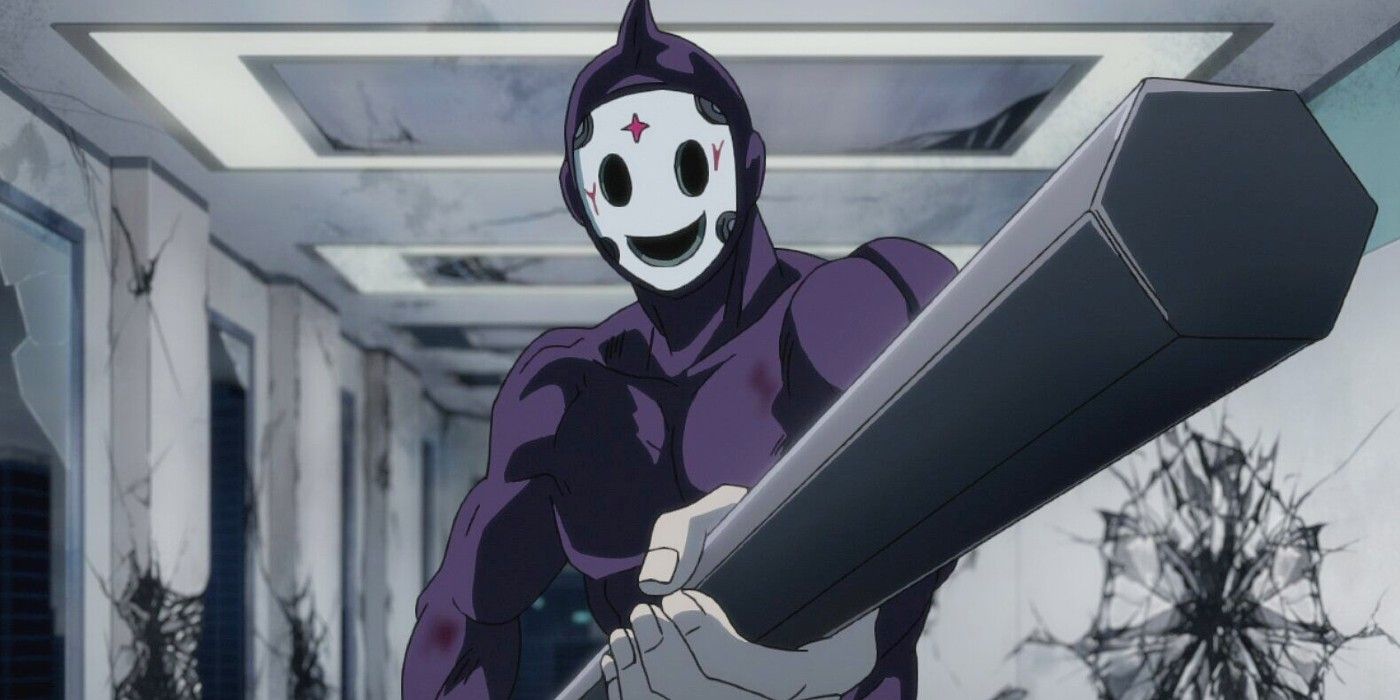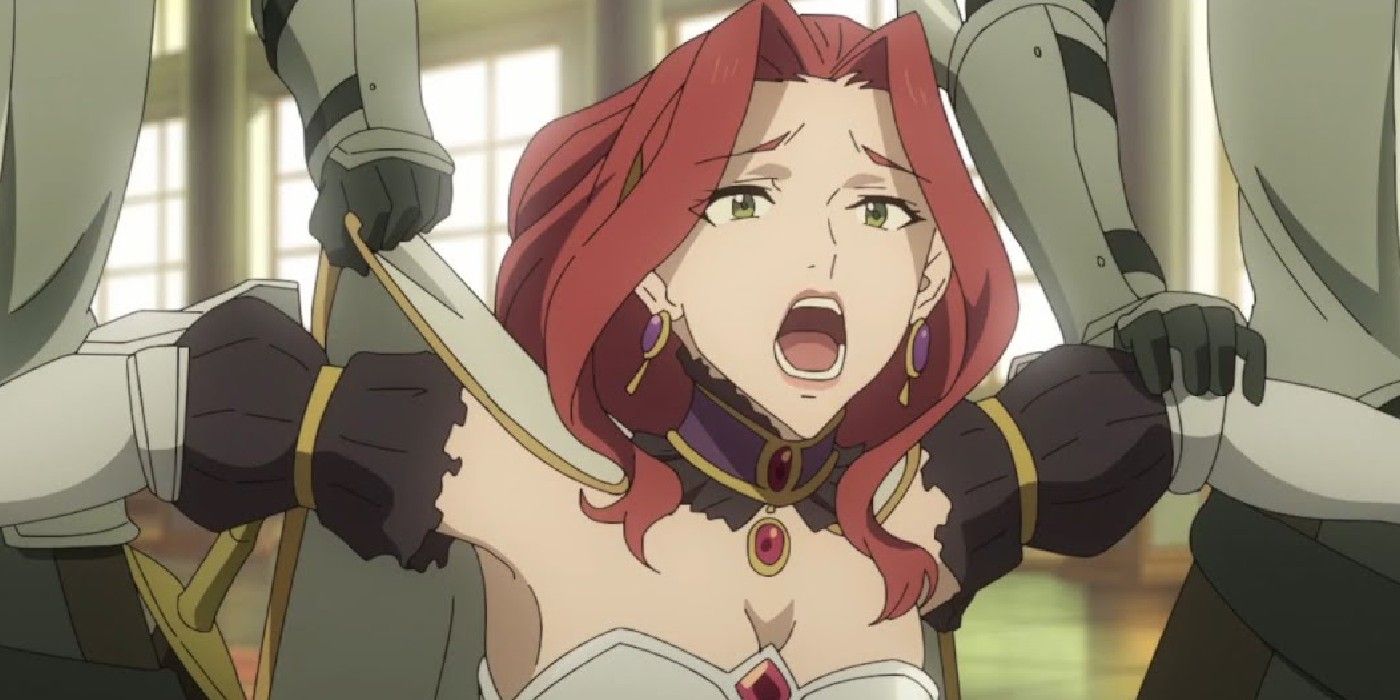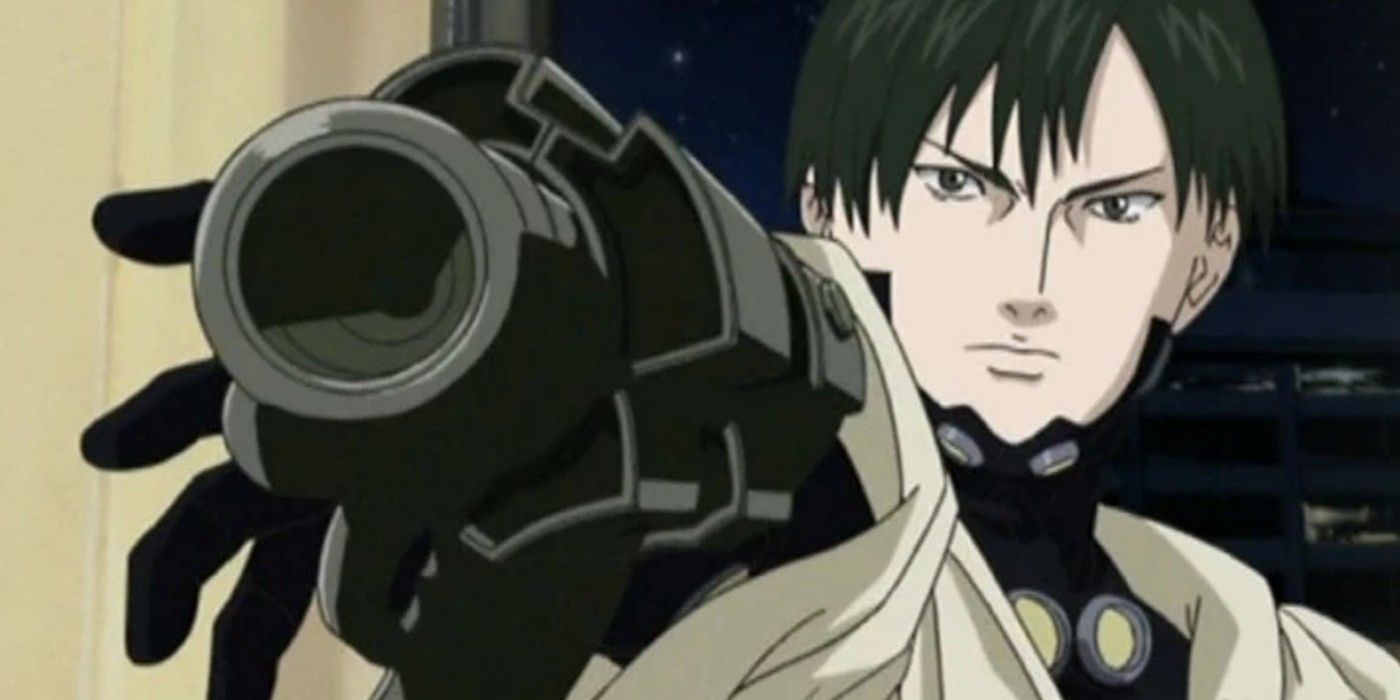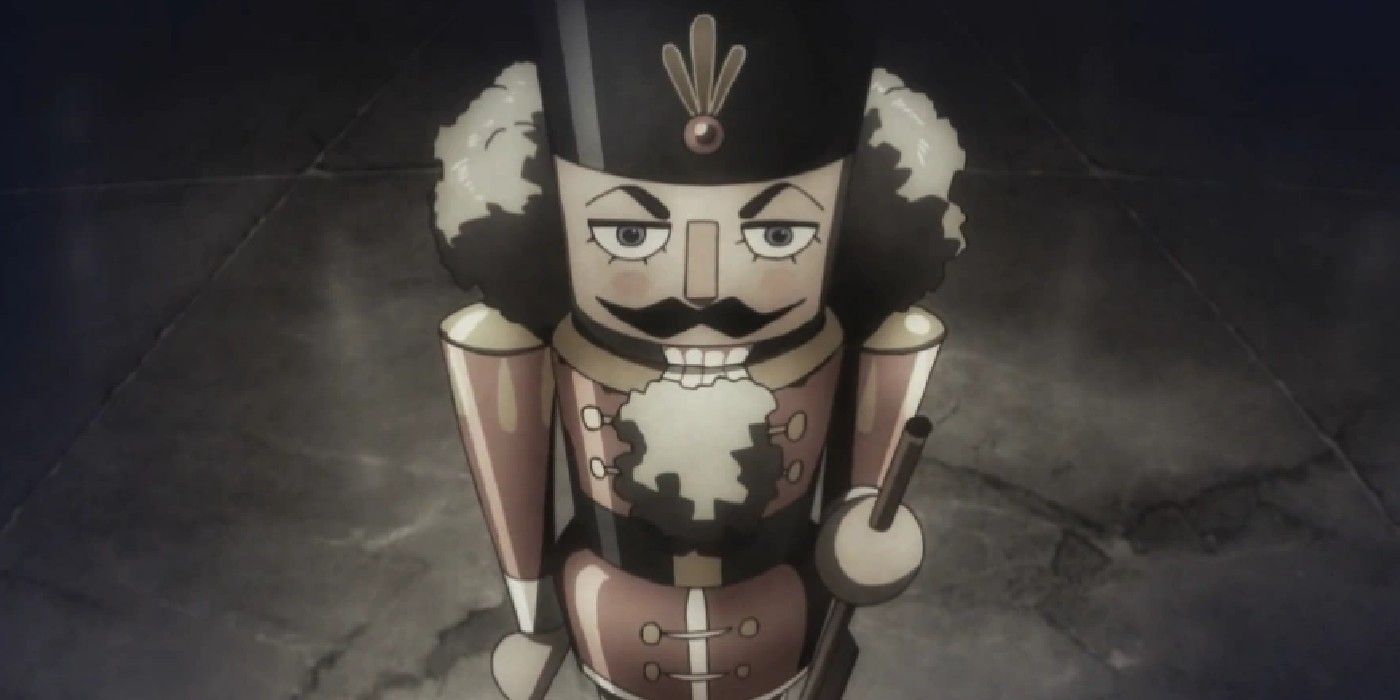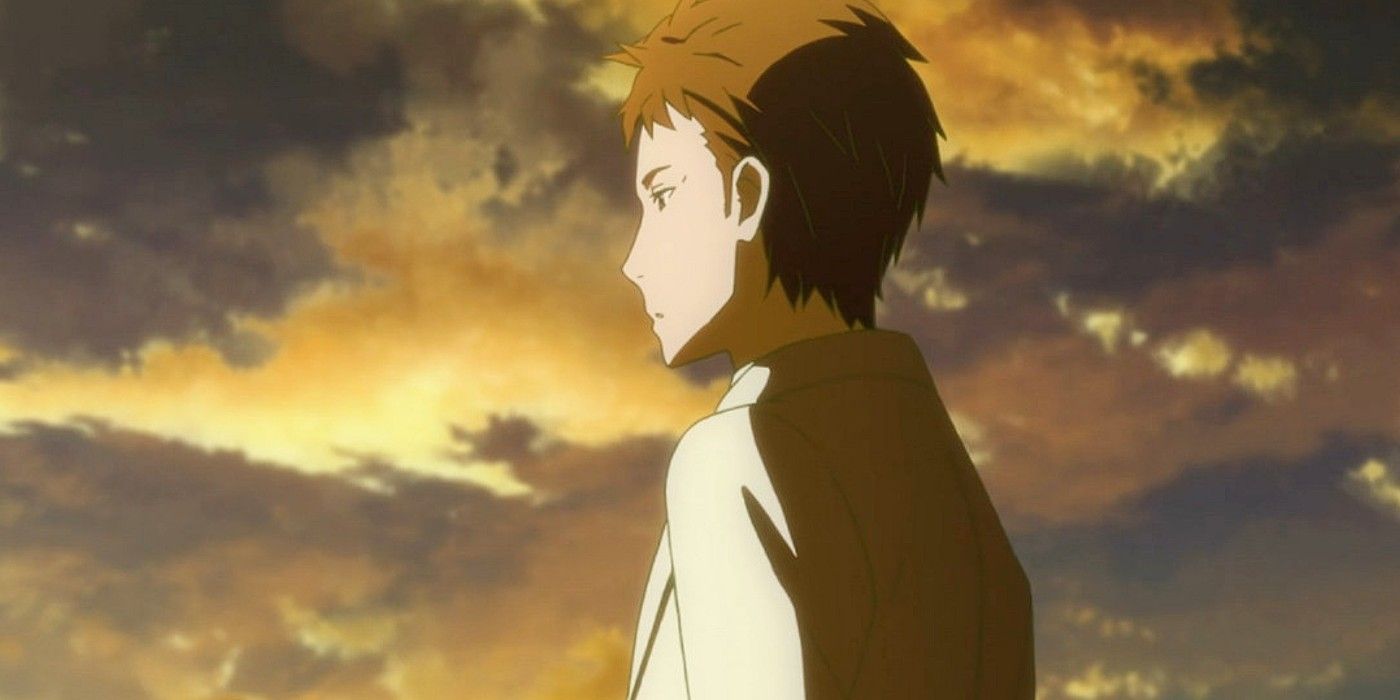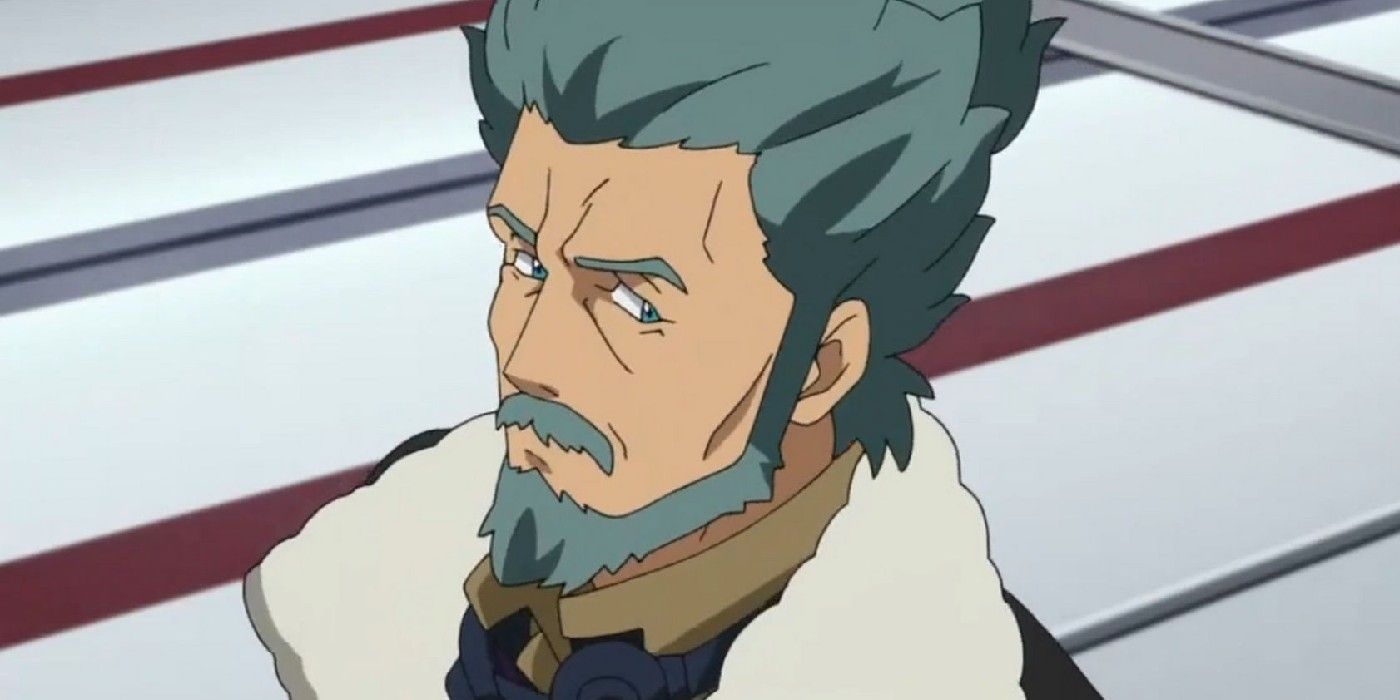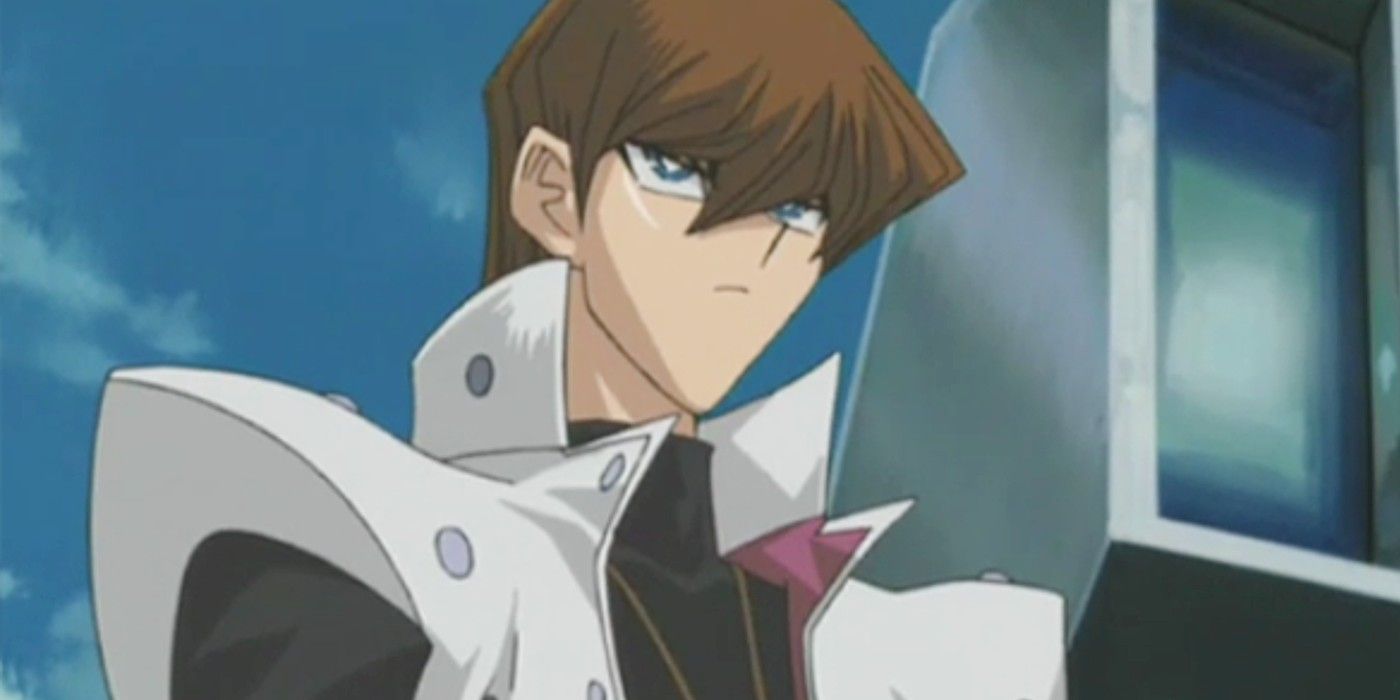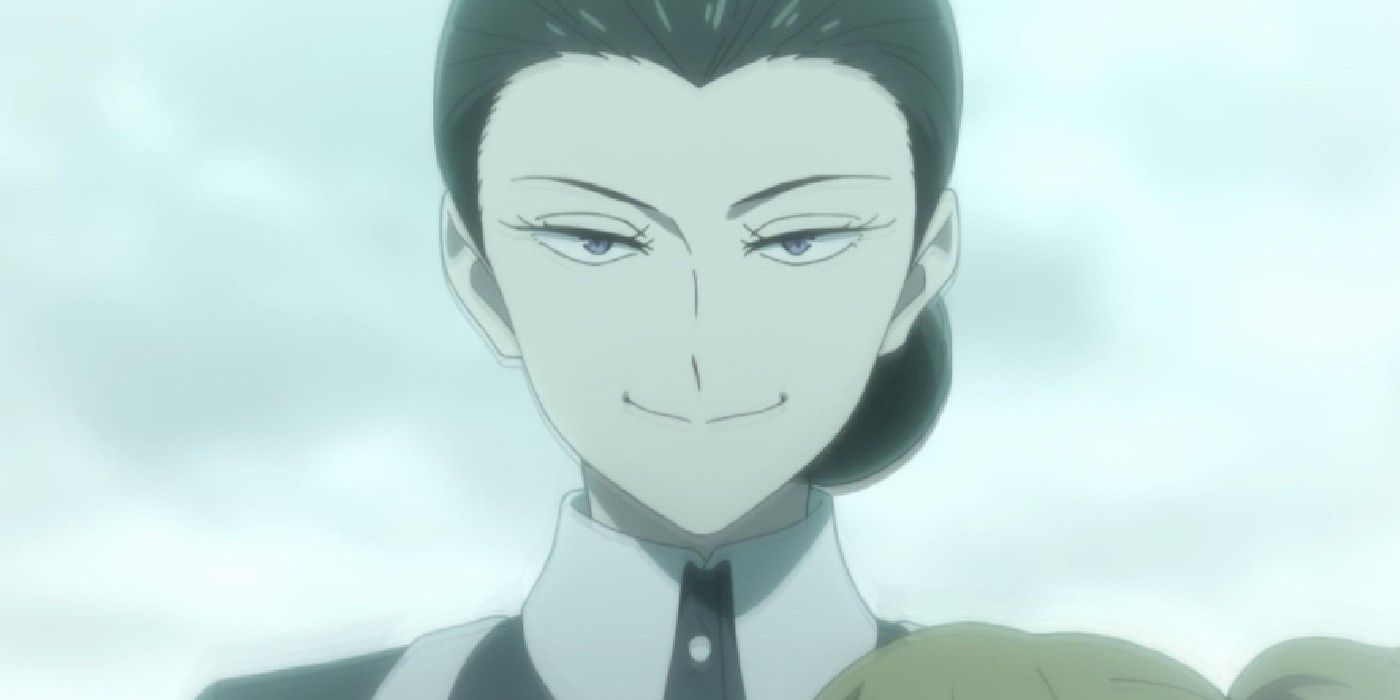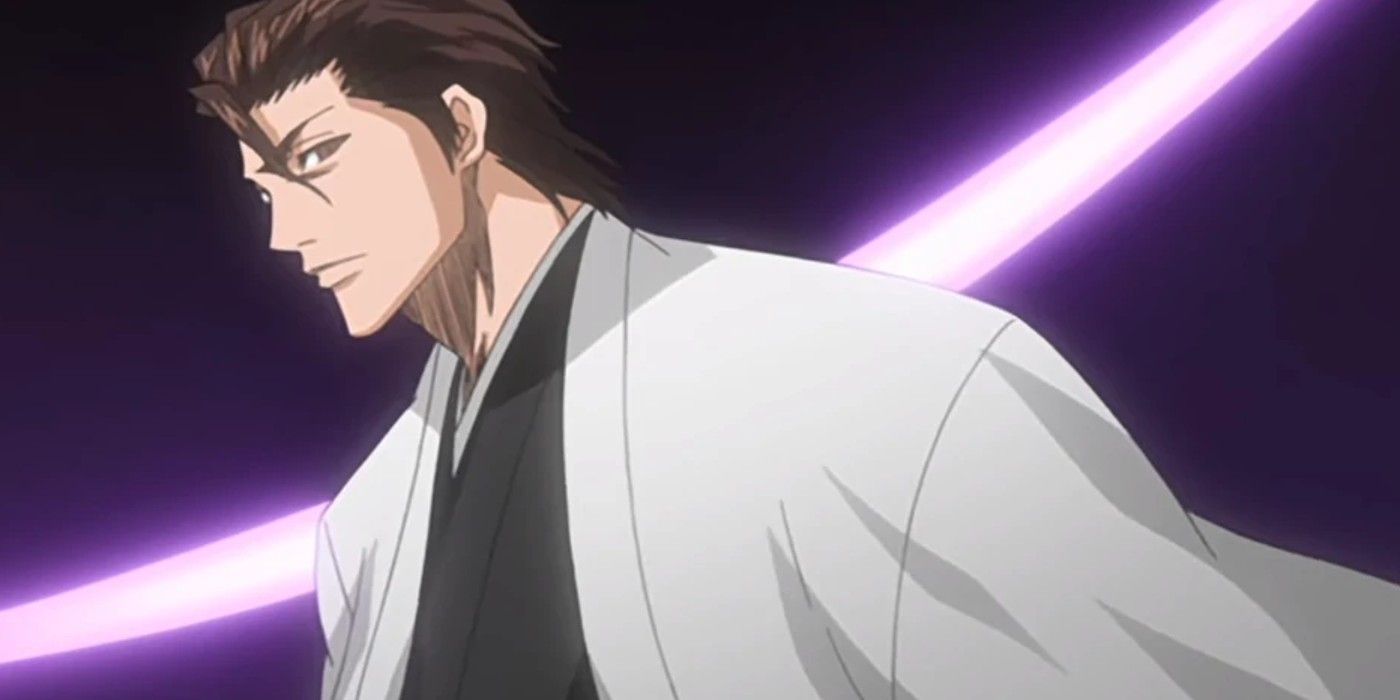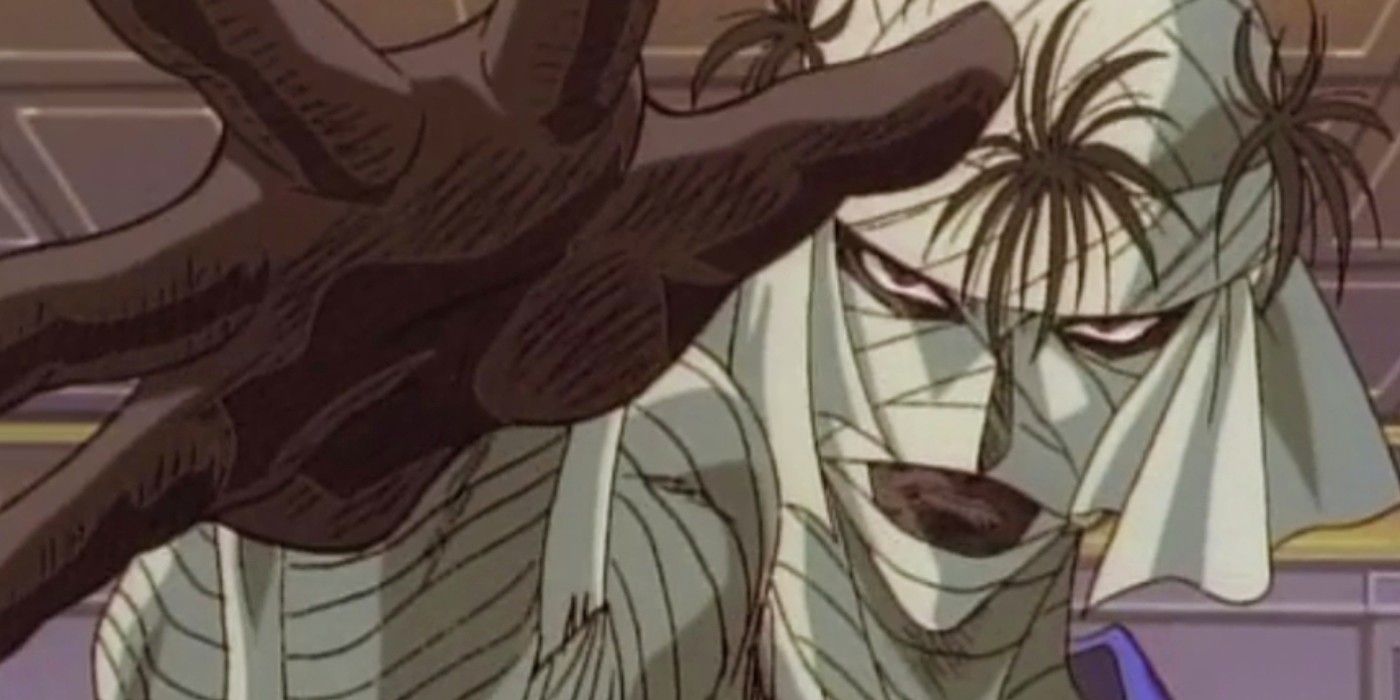Even the worst or most controversial anime have some redeeming qualities, such as their villains. Whether it's by pure accident or otherwise, these villains managed to outlast and even surpass their anime's biggest faults.
From conceptually cool bad guys to truly compelling antagonists, these villains were unfortunately squandered by their respective anime. If not for such circumstances, these villains would've been better remembered by the anime community.
WARNING: Spoilers ahead.
10 High-Rise Invasion — Archangel Was Just That Cool
Despite the manga's popularity, High-Rise Invasion failed to replicate its source material's cult status. The anime was dismissed as yet another derivative death game anime, but one thing everyone agreed on was that the masked enemies known as "Angels" were badass. Special mention went to Archangel, the strongest known Angel so far.
Basically a sentai superhero with terrifyingly real superpowers and a warped sense of justice, Archangel was a violently eccentric strongman whom viewers considered to be a breath of fresh air in an otherwise self-serious anime. Archangel belonged in a better and more over-the-top battle royale that wasn't as pedestrian as High-Rise Invasion.
9 The Rising Of The Shield Hero — Princess Malty S. Melromarc Was A Seductive Agent Of Chaos
At its worst, The Rising Of The Shield Hero could be read as a blatant male power fantasy. The series' main villainess, Princess Malty, made this abundantly clear as she was basically a collection of negative female stereotypes, which stuck out in stark contrast to the heroines of Naofumi Iwatani's party who were notably subservient to him.
That being said, Princess Matly wasn't an inherently bad idea. Her sole motivation was her sadistic pleasure, and the right stories can utilize such agents of chaos to get a theme across (see: Izaya Orihara in Durarara!!). Instead, Princess Malty only existed to be as despicable as possible before the audience surrogate "put her in her place."
8 Gantz — Nishi Joichiro Was The Death Game's Resident Cynic
As one of the core edgy anime of the 2000s, the legendarily gory Gantz was populated by naively moralistic heroes and excessively evil villains. One of the most notable villains was Nishi, a veteran player of Gantz's death games and an irredeemable misanthrope. Nishi fit perfectly into this death game story's juvenile demands, but he had the most untapped potential.
After being cruel and smug beyond belief, Nishi suddenly got a tragic and even sympathetic death. In his dying moments, Nishi revealed what little humanity he had left and gave the remaining players important information about Gantz. Nishi's hateful persona and the vulnerability beneath it deserved a less juvenilely edgy (but still brutal) anime.
7 The Saga Of Tanya The Evil — Being X Was An Evil God
Simply put, Being X is God in The Saga Of Tanya The Evil. Though the salaryman who would become Tanya von Degurechaff had his doubts, Being X was an undeniably omniscient higher power who controlled everything from fate to reality. Rather than maximize this literal man-vs-god conflict, the anime reduced Being X into a punching bag.
Being X was an ineffectually petulant child and a justification for Tanya's atheist screeds, which amounted to the most simplistic arguments against theism available. With a smarter and less indulgent script, Being X could've been a compelling glimpse at what an evil or even immature creator would be like (see: Akane Shinjo in SSSS.Gridman).
6 Sword Art Online — Akihiko Kayaba Was Painfully Human
As the definitive gamified isekai of the 2010s, Sword Art Online isn't just flawed but responsible for codifying many of the genre's worst indulgences. One of the few things that Kirito's time in Castle Aincrad got right was Kayaba (or Heathcliff) who, controversially, forgot why exactly he started the SAO incident.
Kayaba created SAO and trapped 50,000 gamers in it but, over time, forgot what his reasons for doing so were. Of Sword Art Online's many power-hungry villains, Kayaba stood out for being more pained than evil. If the anime properly focused on its themes of gaming as escapism, Kayaba would've been a great foil to Kirito.
5 Mobile Suit Gundam AGE — Flit Asuno Was A Gundam Hero Turned Evil
Gundam AGE may be one of the weaker Gundam entries, but it had one of the long-running franchise's most ambitious premises. AGE starred three generations of Gundam pilots, with the initial protagonist even growing to become the final villain in his old age. Unfortunately, his full potential was squandered by AGE's simplistic writing.
In his youth, Flit was a typically young and idealistic mecha protagonist. After seeing his loved ones die horribly, though, Flit lost himself to hatred and became the Earth Federal Forces' genocidal "hero." Instead of making him confront his darkness, Flit was easily redeemed and immortalized as a hero despite his atrocities.
4 Yu-Gi-Oh! Duel Monsters — Seto Kaiba Was The Definitive Rival
Despite being immortalized through memes and a highly influential abridged series, Yu-Gi-Oh! Duel Monsters was an otherwise generic and overlong tie-in cartoon made primarily to promote a children's card game. That being said, Seto was such an overly determined rival to Yami Yugi that he surpassed the nostalgic title's shortcomings.
Rather than use his business empire for anything truly altruistic or evil, Seto poured its resources into perfecting his favorite card game in the name of one day defeating Yami at it. Seto's over-the-top villainy and undying rivalry didn't just make him one of the franchise's most enduring duelists but upgraded him to anti-hero status.
3 The Promised Neverland — Isabella Was Emma's Tragic Reflection
Before things went downhill in its second season, The Promised Neverland was an intense clash of moralities and worldviews as embodied by Emma and her "mom," Isabella. If Emma was childishly idealistic, Isabella was nefariously cynical. In brief, Isabella was who Emma would've become in old age if she gave up the fight.
In the manga, she got a deep dive into her psychology that ended with her redemption through death. Conversely, the anime's infamous second season blitzed through her development to give her an unearned happy ending in the human world. Isabella was a conflicted villain who didn't just deserve more screen time, but a better anime as well.
2 Bleach — Sosuke Aizen Was The Greatest Mastermind Of His Time
For better and worse, Bleach never hinted at Aizen's shadow and influence. The mild-mannered Shinigami being the mastermind behind Soul Society's civil war and its later all-out armed conflict with the Hollows' realm of Hueco Mundo caught everyone off guard, and Aizen quickly became one of the most iconic anime villains of the 2000s.
After Aizen dropped his mask at the end of the Soul Society Arc, though, Bleach failed to capitalize on him. Rather than evolve as a godlike villain wrestling with his immortality, Aizen was reduced to little more than a nigh-unbeatable bad guy for Ichigo Kurosaki to defeat. Aizen would've flourished in a better-written anime with the same themes.
1 Ruroni Kenshin — Makoto Shishio Was A Warning Against Extremism
What makes Ruroni Kenshin polarizing and even hated by some isn't its quality, but its highly controversial creator. However, even momentarily ignoring these external circumstances, it's hard to deny that Kenshin Himura's story peaked at the Kyoto Arc and never recovered. This was mostly thanks to Shishio, the arc's now-legendary villain.
To this day, Shishio remains one of the medium's darkest depictions of nationalism, as his nostalgia for Feudal Japan's warring states perfectly reflected certain moods and political climates in Japan and even other countries. As a testament to his impact, Shishio's villainous legacy was able to outlast Ruroni Kenshin's now tainted reputation.

